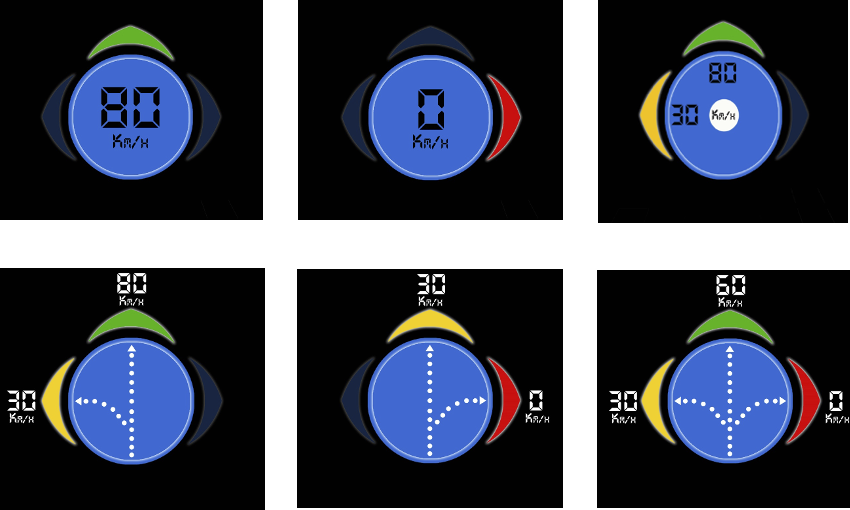Traffic Info Design
Overview
Effective Flow of Information to Motorists
📅 Aug 2015 – Nov 2015
🏛️ Design and Innovation Centre, IIT Gandhinagar
🎓 Supervised by Dinesh Korjan (Adjunct Faculty of Design)
👥 Collaborator: Abhishek Gahatraj, now a Senior UX Researcher
This project addressed traffic chaos in Indian shared spaces—unregulated zones where road users navigate through social negotiation rather than strict rules. Focusing on high-risk junctions and crossings, we designed a driver-assistance system concept to convey critical information about speed regulation and blind-spot vehicles through cognitively optimized interfaces.
Aim
- Identify primary accident causes at junctions (overspeeding, blind-spot collisions)
- Design a driver-assistance interface that:
- Detects vehicles at turns/crossings (including blind spots)
- Communicates optimal speed for collision prevention
- Minimizes cognitive load through intuitive visual coding
- Explore how information delivery affects driver decision-making
Research Questions
- What information is most critical for preventing junction accidents?
- How can interfaces convey urgency without causing distraction?
- Can simplified visual cues replace complex processing during driving?
Methodology
- Accident Pattern Analysis: Video review of traffic incidents
- (Key finding: >70% accidents at junctions due to overspeeding/negligence)
- Cognitive Load Optimization:
- Designed interfaces requiring minimal higher-level processing
- Iterative Interface Design:
- Created multiple prototypes
- Conducted user feedback studies with IITGN drivers
- Refined based on behavioral misinterpretations
- Sensor Integration Planning: Vehicle detection system for blind spots
Key Insights
- Critical intervention points: Turns and crossings account for highest collision risk
- Cognitive constraints:
- Color semantics vary culturally (red = stop vs. warning)
- Arrows interpreted as directives rather than suggestions
- Distance perception challenging in abstract displays
- Design paradox:
Caution signals perceived as redundant by experienced drivers
Yet vital for hazard awareness - Golden rule:
“The best method to convey information is to put it across in the simplest way”

Illustration of alternative visual design approaches for presenting traffic information to drivers in shared urban spaces.
Skills Applied
- Human-Centered Design
- Systems Thinking
- Interaction Design
- Cognitive Load Analysis
- Cross-Cultural Semiotics
- User Feedback Synthesis
Outcomes
- Prototype interface designs optimized through 3 iterations
- Framework for shared-space driver assistance systems
- Validated design principles:
- Avoid red for warnings (cultural halt association)
- Use yellow for cautions (universal recognition)
- Supplement arrows with distance indicators
- Minimize visual elements to essential information
Future Work
- Broaden user testing beyond academic population
- Develop virtual environment simulation for ecological validation
- Create video prototypes demonstrating real-time interface behavior
- Hardware integration of vehicle detection sensors
- Refine designs through large-scale driver studies
Collaboration Opportunities
Open to collaboration. While the dataset is not shareable, I’m happy to discuss the design process, insights, and approach in detail.